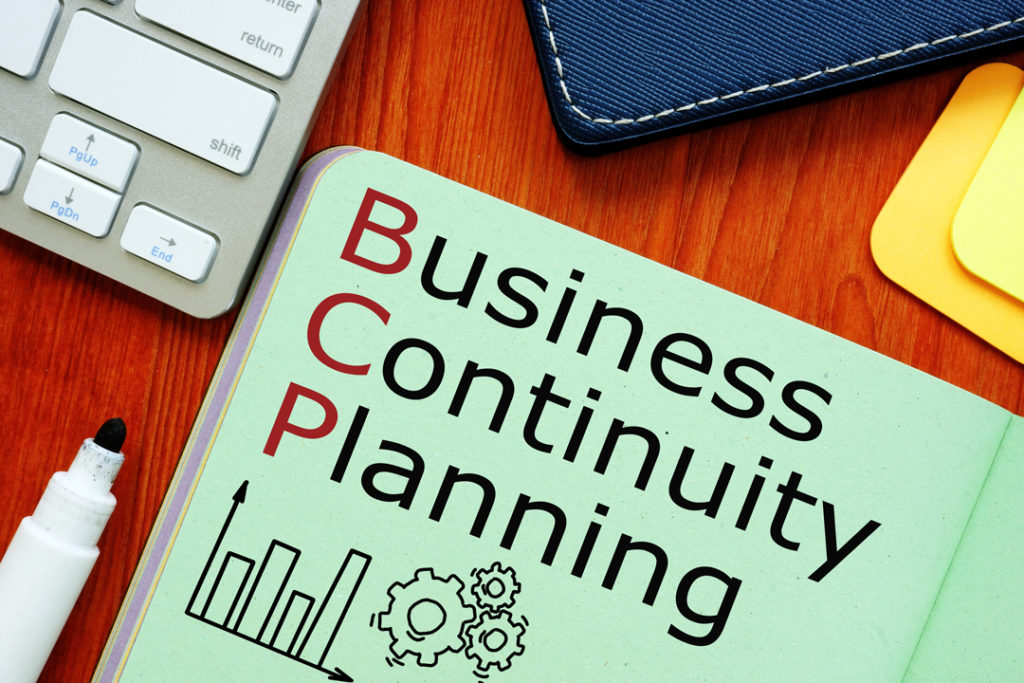If you’re responsible for the day-to-day business operations of your company, you’re probably familiar with the concept of Business Continuity Planning. A business continuity plan (BCP) is a documented plan that outlines how a company will continue to operate during and after a disaster.
This blog post will discuss the importance of business continuity planning and how it can benefit all businesses, regardless of size. We will also describe how a Business Continuity Service Provider can help your business create and implement a BCP.
What is business continuity planning (BCP)?
Every business, no matter the size, should have a BCP in place. A BCP includes detailed procedures for responding to various types of disasters, including fires, floods, power outages, and cyberattacks.
BCPs are often created by Business Continuity Service Providers (BCSPs) in consultation with business owners. BCSPs are firms that specialize in helping businesses develop and implement BCPs.
BCPs can be contracted as a managed service or as part of an overall risk management strategy.
Why do you need BCP/disaster recovery planning (DRP)?
A BCP is necessary because it helps businesses protect their operations, employees, and customers in the event of a disaster. A BCP can also help companies recover from a disaster more quickly, thereby reducing the financial impact.
The components of a good BCP/DRP
A good Business Continuity Plan (BCP) includes any or all of the following components:
Business Impact Analysis (BIA):
A BIA is a process of assessing the potential impacts of a disaster on a business. The results of the BIA help businesses determine which functions are most critical to their operations and what measures are needed to protect those functions.
Business Continuity Plan (BCP):
The BCP is a document that outlines how a company will continue to operate during and after a disaster. The BCP should include detailed procedures for responding to various types of disasters, including fires, floods, power outages, and cyberattacks.
Disaster Recovery Plan (DRP):
The DRP is a document that outlines how a company will recover its critical systems and data after a disaster. The DRP should include detailed procedures for recovering data, restarting systems, and restoring communications.
Crisis Management Plan:
The crisis management plan is a document that outlines the steps that will need to be taken to respond to a significant emergency or crisis. The crisis management plan should include procedures for notifying employees, customers, and the media and instructions for dealing with financial emergencies.
Business Continuity Staff:
Business continuity planning requires the participation of key personnel who will be responsible for implementing the BCP. Business continuity staff should be designated and trained to respond to a disaster.
Testing and Maintenance:
Business continuity plans should be tested regularly to ensure that they are up-to-date and effective. Plans should also be modified as needed to reflect changes in the business environment.
How to create a BCP/DRP for your business
The first step in creating a Business Continuity Plan (BCP) or Disaster Recovery Plan (DRP) is to conduct a Business Impact Analysis (BIA). The BIA helps businesses identify which functions are most critical to their operations and what measures need to be taken to protect those functions.
Once the BIA is complete, the Business Continuity Plan (BCP) can be created. The BCP should include detailed procedures for responding to various types of disasters, including fires, floods, power outages, and cyberattacks. The BCP should also have a disaster recovery plan (DRP) that outlines how the company will recover its critical systems and data after a disaster.
The crisis management plan should be included as part of the BCP. It will outline the steps taken to respond to a major emergency or crisis. The crisis management plan should include procedures for notifying employees, customers, and the media and instructions for dealing with financial emergencies.
Implementing and testing your BCP/DRP
Once a Business Continuity Plan (BCP) or Disaster Recovery Plan (DRP) is created, it must be implemented and tested. The BCP should be tested regularly to ensure that it is up-to-date and effective. Plans should also be modified as needed to reflect changes in the business environment, such as organizational structure changes, personnel changes, or the addition of new technology.
Business continuity planning requires the participation of key personnel who will be responsible for implementing the BCP. Staff should be designated and trained to respond to a disaster.
Outsourcing the BCP/DRP process
Creating both a BCP and DRP can be overwhelming for any business. The good news is that you don’t have to do it all on your own. The learning curve is steep, and it’s easy to miss critical components.
There are many Business Continuity Service Providers (BCSPs) who can help businesses create, implement, and test your BCPs and DRPs. BCSPs can also provide guidance on responding to various types of disasters.
When selecting a BCSP, it is vital to choose a company that has experience in your industry and can provide the services you need. You should also consider the size of your company and the type of disasters you are most likely to experience.
Consider a Total Networx Business Continuity Plan
A Total Networx Business Continuity Plan guides you through recovery in the case of significant technological disruption. We examine your infrastructure, software, business model, and other critical elements of your operation to develop a custom solution for you.
The following are some of the components included in a Total Networx BCP:
Quality Backup
The images taken by our backup and crisis recovery solution are dependable snapshots of your computer that preserve data, applications, and other information as it changes over time. In minutes, you may restore lost data to the most recent backup.
Monitoring
When you’ve completed your Business Continuity Plan, our comprehensive 24-hours-a-day, 7-days-a-week monitoring will detect system failures, and mitigation actions will take place – typically before you are even aware of them.
Endpoints
We provide a plan that includes everything from servers to desktops, virtual machines, Exchange servers, and Cloud-based servers.
Testing
Our techs can mount your backup images as drives, allowing you to view that they function while still recovering files and folders.
Virtual Lab
We’ll be able to quickly replicate your images offsite to keep your data secure in the event of a catastrophe.
File and Folder Optimization
We reduce storage demand by gathering your backup images together using our unique technology.
Don’t wait to prepare for business interruption
We see too many businesses wait until after they’ve experienced a disaster to start this process. Call or contact us today to learn more about how Total Networx can get you back up and running in the event of a catastrophic disruption to your business technology.
FAQs
Q: What is Business Continuity Planning (BCP), and why is it important for businesses?
A: Business Continuity Planning (BCP) refers to the process of creating strategies and procedures that enable a company to continue its essential operations and services during and after unexpected disruptions or disasters.
These disruptions can range from natural disasters to cyberattacks and even pandemics.
BCP is crucial for businesses because it helps them minimize downtime, reduce financial losses, maintain customer trust, and safeguard their reputation in the face of unforeseen events.
Q: How does Business Continuity Planning differ from Disaster Recovery Planning?
A: While both Business Continuity Planning (BCP) and Disaster Recovery Planning (DRP) aim to protect businesses from disruptions, they have distinct focuses.
BCP encompasses a broader scope, including developing strategies to ensure the continuation of critical business processes, often incorporating risk assessments, crisis management, and employee safety.
On the other hand, DRP primarily deals with recovering IT infrastructure and data after a disaster, concentrating on technical aspects like backups, data restoration, and system recovery.
Q: What are the key elements of an effective Business Continuity Plan?
A: An effective Business Continuity Plan consists of several key elements, such as:
- Risk Assessment: Identifying potential threats and vulnerabilities that could impact the business.
- Business Impact Analysis (BIA): Determining the potential consequences of disruptions on critical processes and resources.
- Response and Recovery Strategies: Outlining detailed action plans to address various disasters or incidents.
- Communication Plan: Defining clear communication channels and protocols to keep stakeholders informed during crises.
- Testing and Training: Regularly testing the plan through simulations and training employees to ensure they understand their roles during emergencies.
Q: What industries benefit the most from implementing Business Continuity Planning?
A: Business Continuity Planning is beneficial for businesses across various industries. However, some sectors heavily rely on uninterrupted operations, making BCP especially vital for them. These industries include but are not limited to:
- Finance and Banking: Ensuring continuous financial transactions and data security.
- Healthcare: Maintaining critical patient care and access to medical records.
- Information Technology: Guaranteeing uninterrupted services and safeguarding data.
- Manufacturing: Minimizing production disruptions and supply chain interruptions.
- Hospitality: Providing seamless customer service even during emergencies.
Q: How often should a Business Continuity Plan be reviewed and updated?
A: A Business Continuity Plan is not a one-time task; it requires regular review and updates to remain effective. As businesses evolve, their operations, risks, and resources change over time.
Reviewing and updating the plan at least annually or whenever significant organizational changes occur is recommended.
After any real-life activation or during routine testing, lessons learned should be incorporated into the plan to enhance efficiency and relevance.



